7 Case Filing
As of 17 July 2020, Mastercard changed the Chargeback process to a rules-based system which is designed to make disputes fairer and more responsive for all parties.
As a result of these changes, arbitration is no longer part of the Chargeback process. Instead, if a chargeback is rejected and the customer wants to dispute the case further, they can raise this as a case filing to Mastercard.
The fees associated with the case filing process are also different to that for chargebacks. For more information about the fee structure, contact Mastercard.
7.1 What is Case Filing?
Mastercard case filing is a feature through which an issuer or an acquirer can raise a concern with Mastercard.
To dispute a transaction after completion of the chargeback cycle, you can create either a pre-arbitration or arbitration case. Pre-arbitration case filing differs from arbitration case filing only in terms of the fees charged by Mastercard. For information about fees, contact Mastercard.
In terms of reporting, case filings and chargebacks are two different transaction types. No transaction is created at card level for the new arbitration/pre-arbitration case filings, thus no data is sent to EHI.
Thredd do not currently support compliance case filings (pre-compliance and compliance). Thredd supports only pre-arbitration and arbitration case filings.
7.2 Creating a Case
If you want to dispute a transaction after completion of the chargeback cycle, you can create either a pre-arbitration or arbitration case.
To raise a case with Mastercard, you can either use Smart Client or you can file arbitration cases directly with Mastercard using the Mastercom UI.
To access case filing functionality, you require the appropriate user permissions which you must request from Thredd. Contact your Account Manager for more information.
The following section explains how to use Smart Client to raise a case with Mastercard, and view cases.
7.2.1 Creating a Case in Smart Client
From the View Transactions screen:
-
Right click on the second presentment transaction.
-
Select Actions > Create Case Filing.

Figure 20: Create Case Filing menu option
The Create Case Filing screen appears showing the second presentment details:
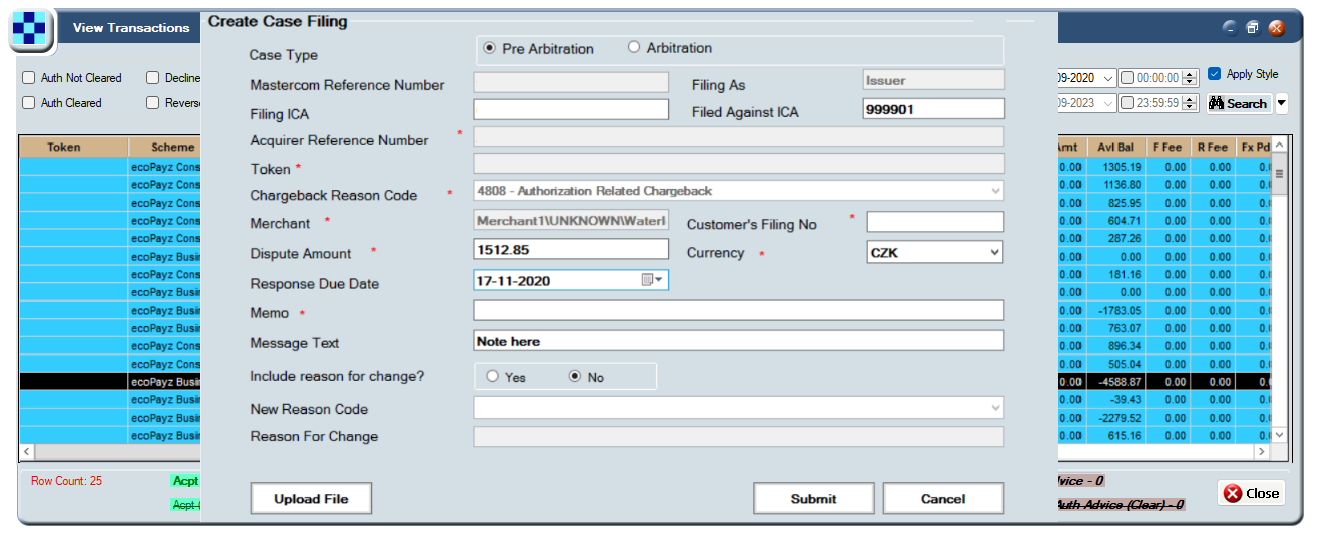
Figure 21: Create Case Filing Screen
-
Choose whether to raise a Pre Arbitration or an Arbitration case.
-
To upload a file, select Upload File. The following screen appears where you can select the file you want to upload.
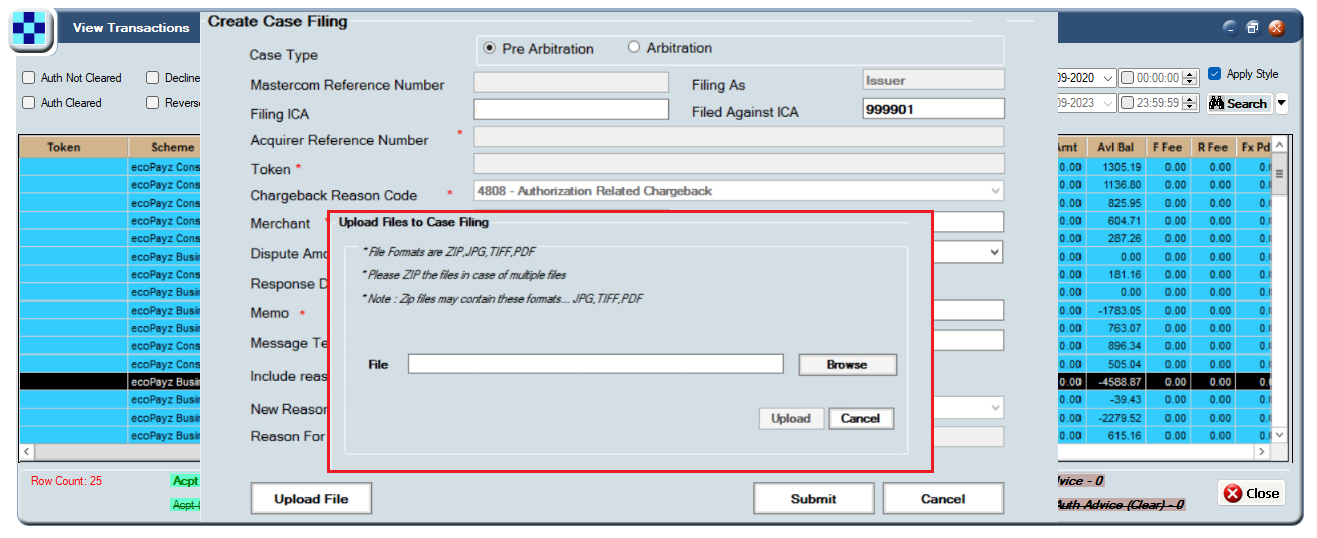
Figure 22: Upload Files to Case Filing Screen
-
Click Submit to create the case.
7.2.2 Viewing Cases
To view cases using Smart Client:
-
Select Card activity > Case Filing. The Case Filing screen appears.
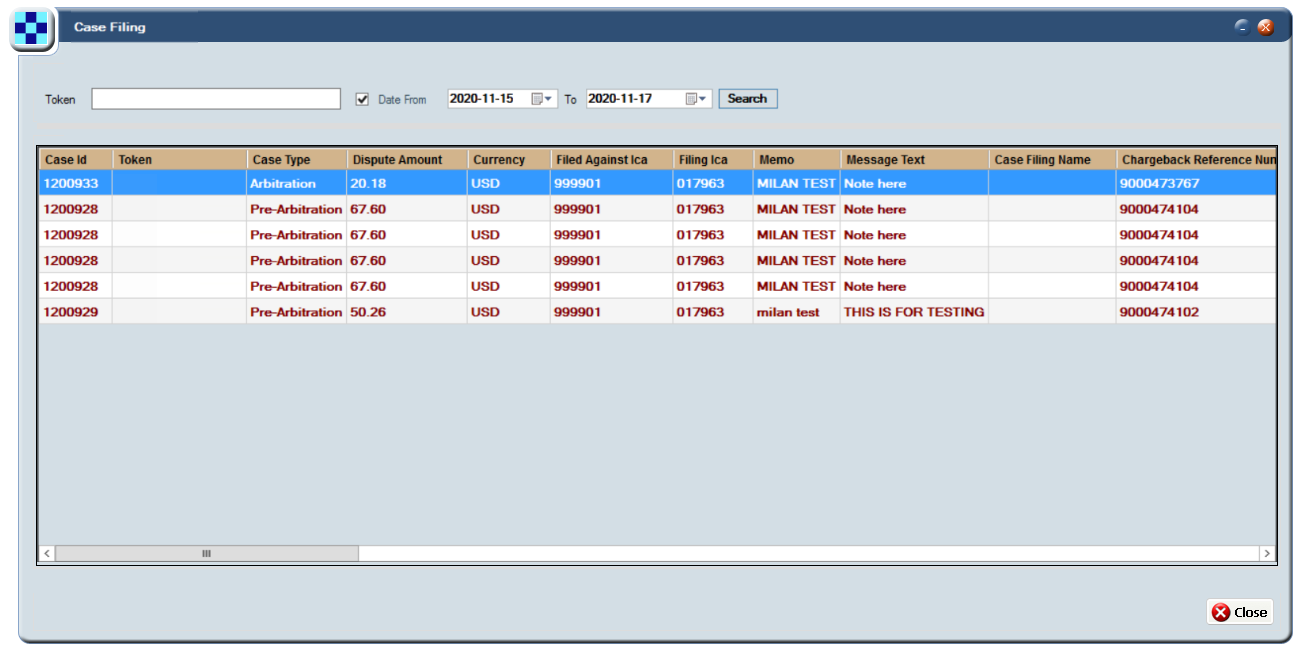
Figure 23: Case Filing Screen
7.2.3 Updating a Case
To update a case:
-
Select Card activity > Case Filing
-
Right click a file and choose Update Case Filing. The following screen appears:
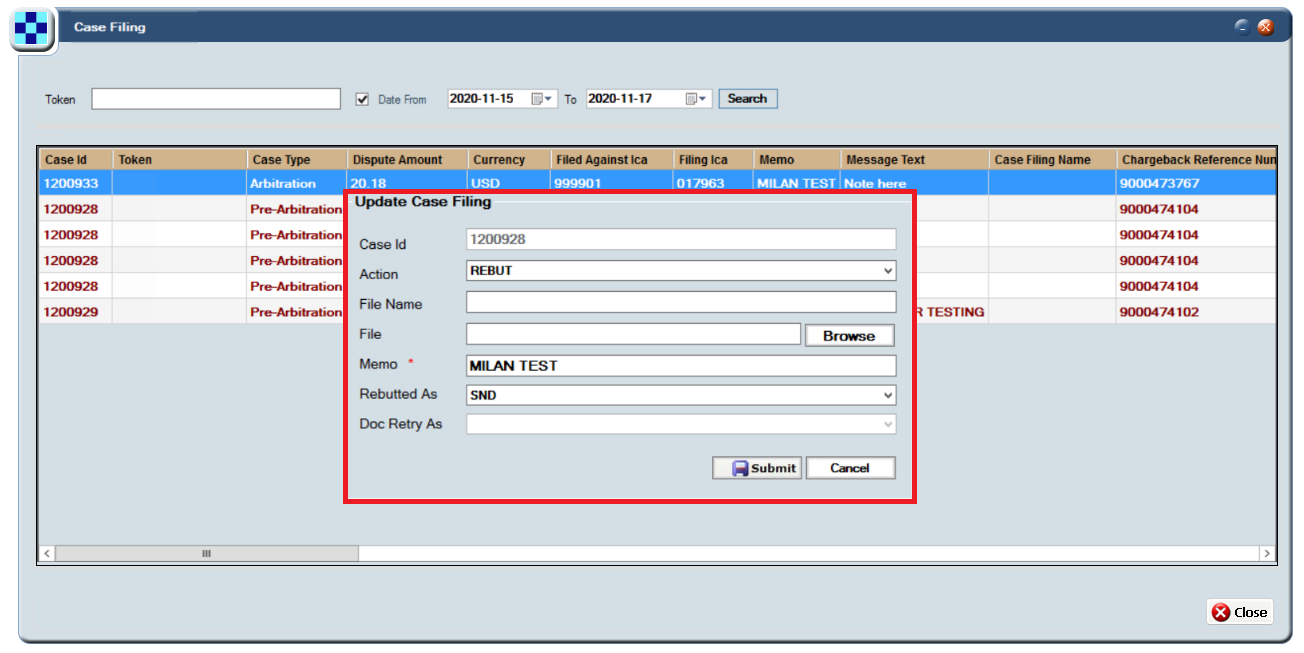
Figure 24: Update Case Filing Screen
-
Choose whether to Escalate, Withdraw, Rebut, or Doc_Retry.
-
Select Submit.
7.2.4 Viewing the Status of a Case
To retrieve the status of a case:
-
Select Card activity > Case Filing
-
Right click a file and choose Retrieve Case File Status.
A screen appears showing the status of the case:
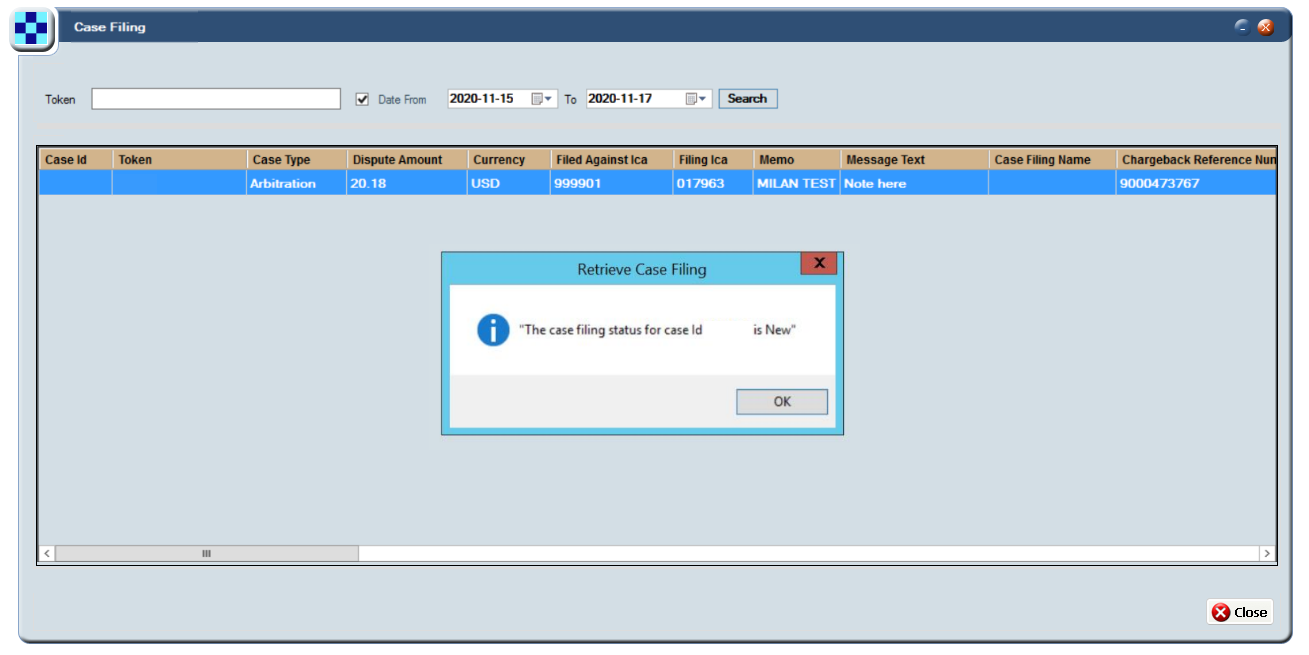
Figure 25: Retrieve Case Filing Screen
7.2.5 Downloading a Case Document
You can use the download functionality to check what documents you uploaded as part of the case.
To download a document associated with a case:
-
Select Card activity> Case Filing.
-
Right click a file and choose Download Case Filing file.
-
When prompted, confirm that you want to proceed with the download.
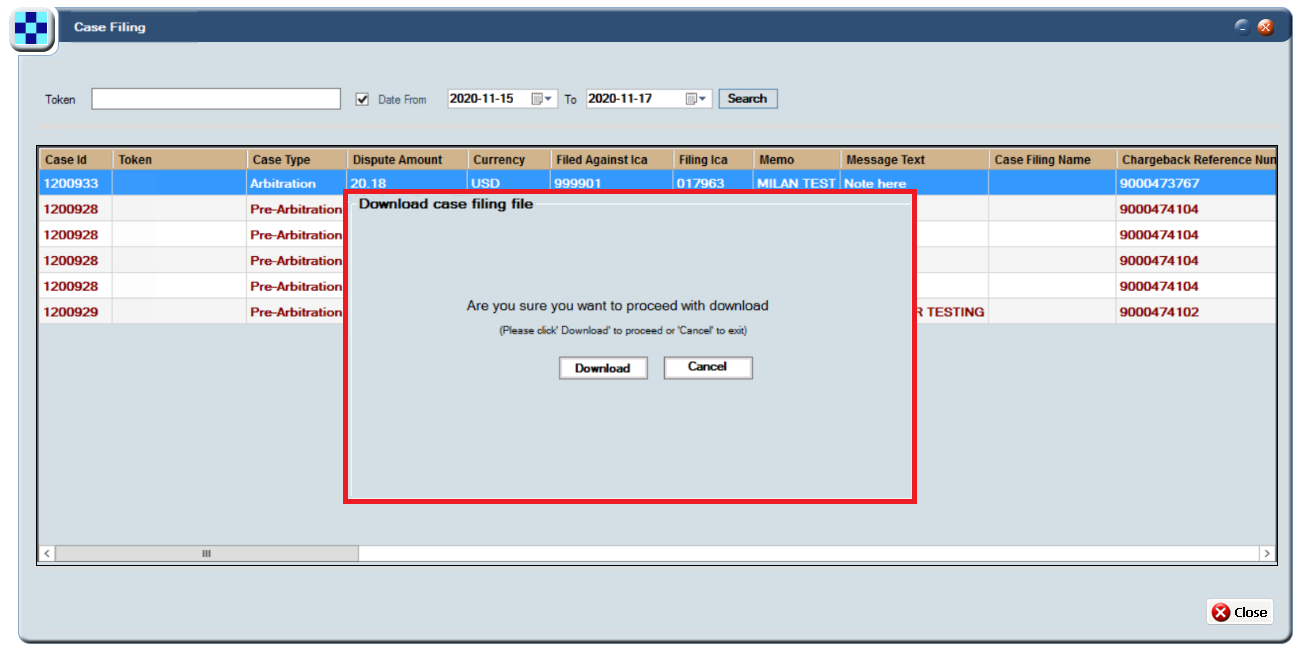
Figure 26: Download Case Filing File Screen
7.3 Crediting a Successful Case
This section explains how to credit a successful case to the cardholder.
Unlike chargebacks, upon a successful case filing there is no simple method to credit funds directly into the cardholder’s account. This is because there is no transaction record created at card level for arbitration/pre-arbitration case filings, and therefore no way to link arbitration information to the original transaction.
Instead, after identifying that a case filing is successful, you must credit the funds via a balance adjustment or load. For more information, see the Smart Client Guide.
7.4 Viewing Case Filing Fees
This section explains how to see information relating to the fees associated with the case filing.
All fees related to arbitration / pre-arbitration case filing records from Mastercard are included in the Mastercard Fee section of the Transaction XML reports. For more information, see the Transaction XML Reporting Guide.